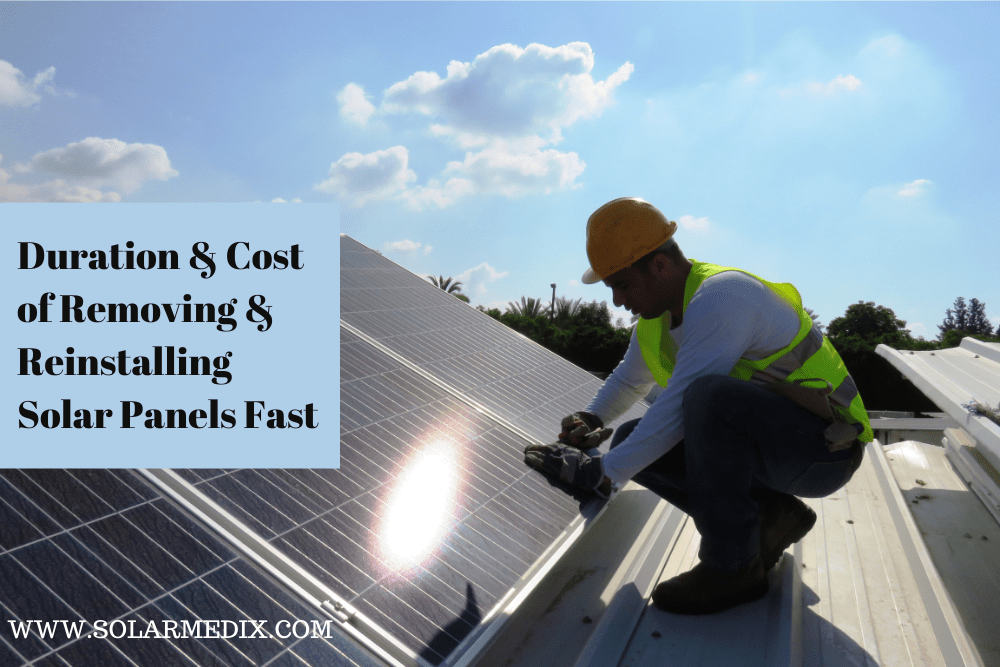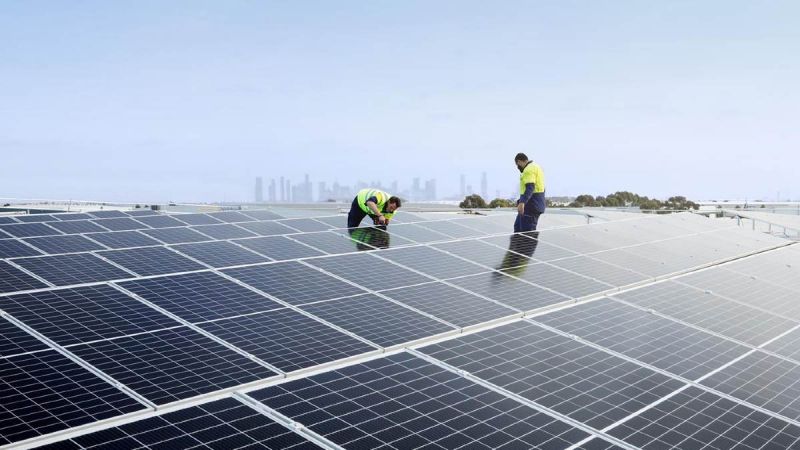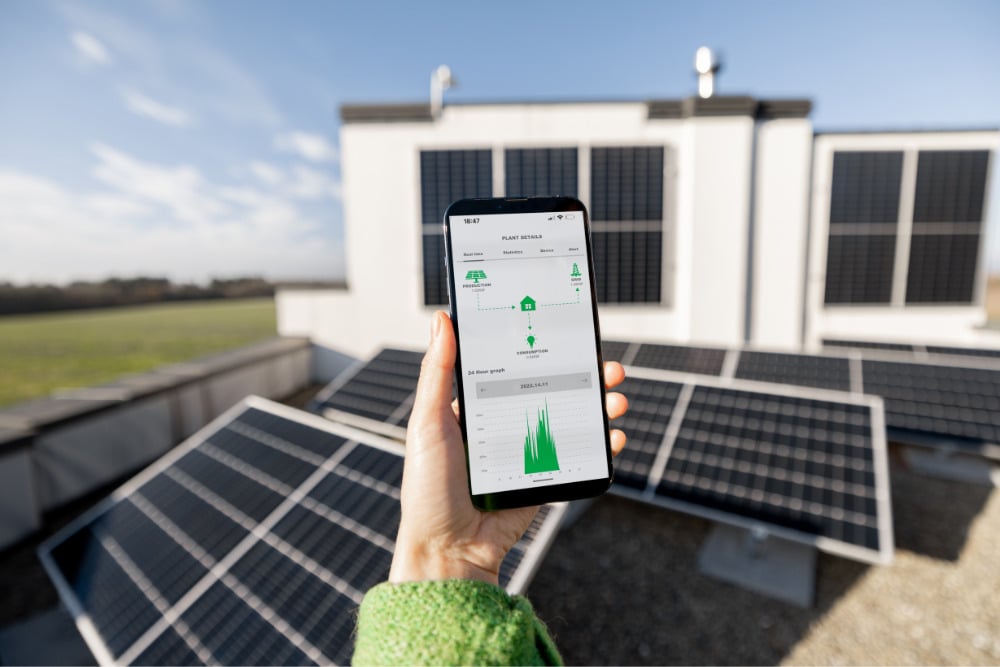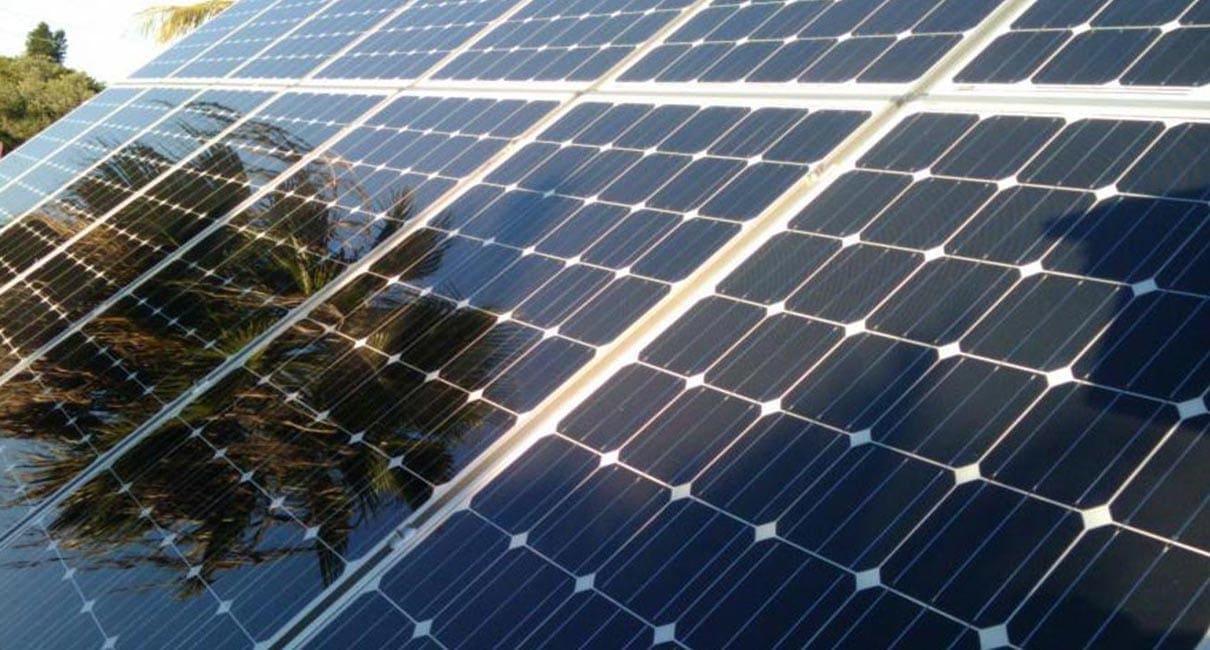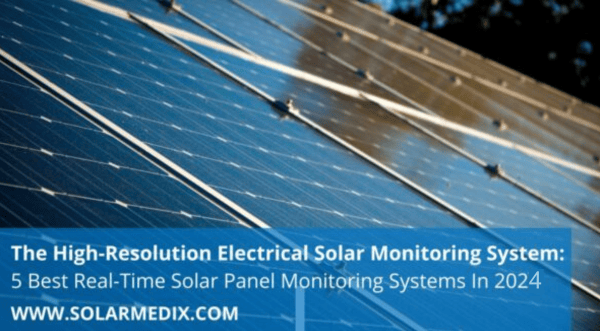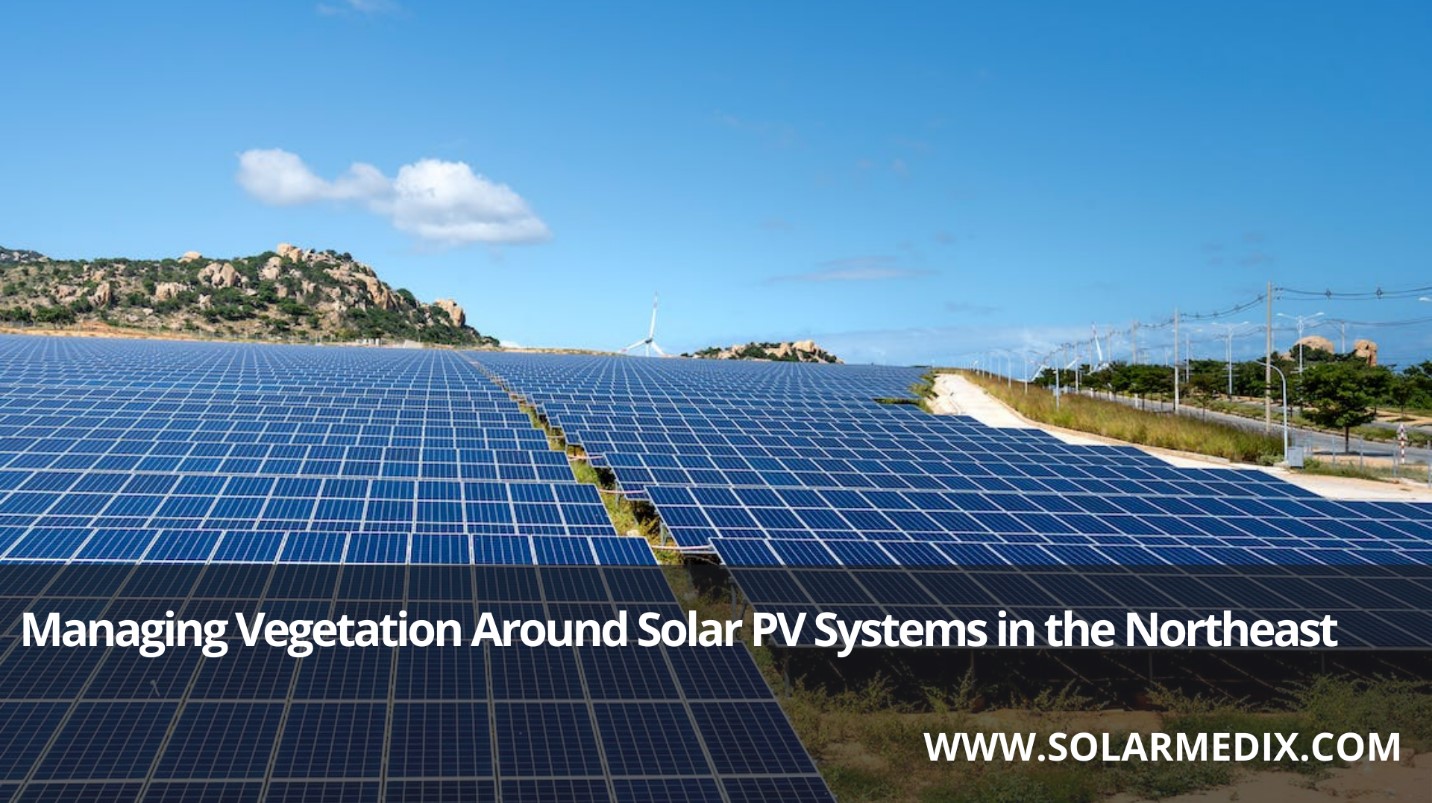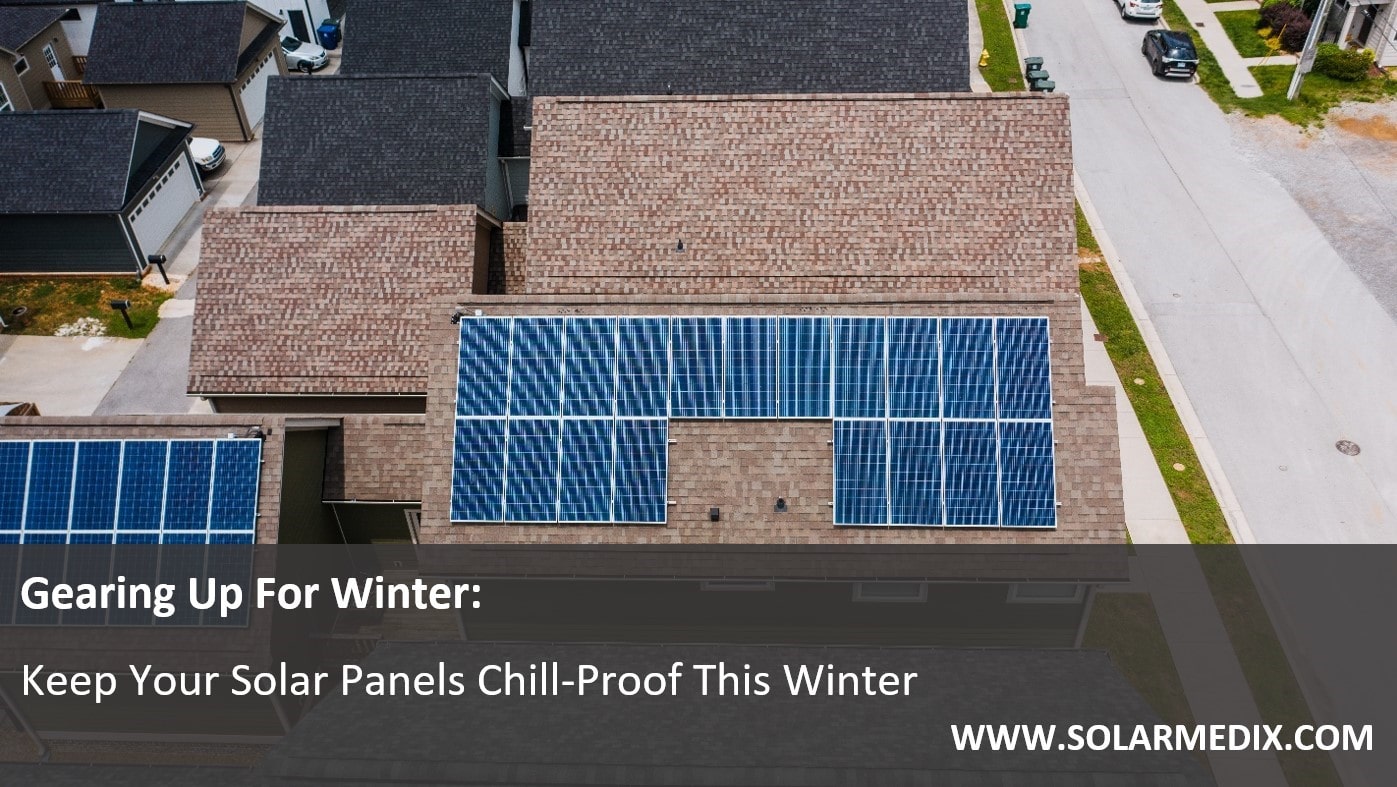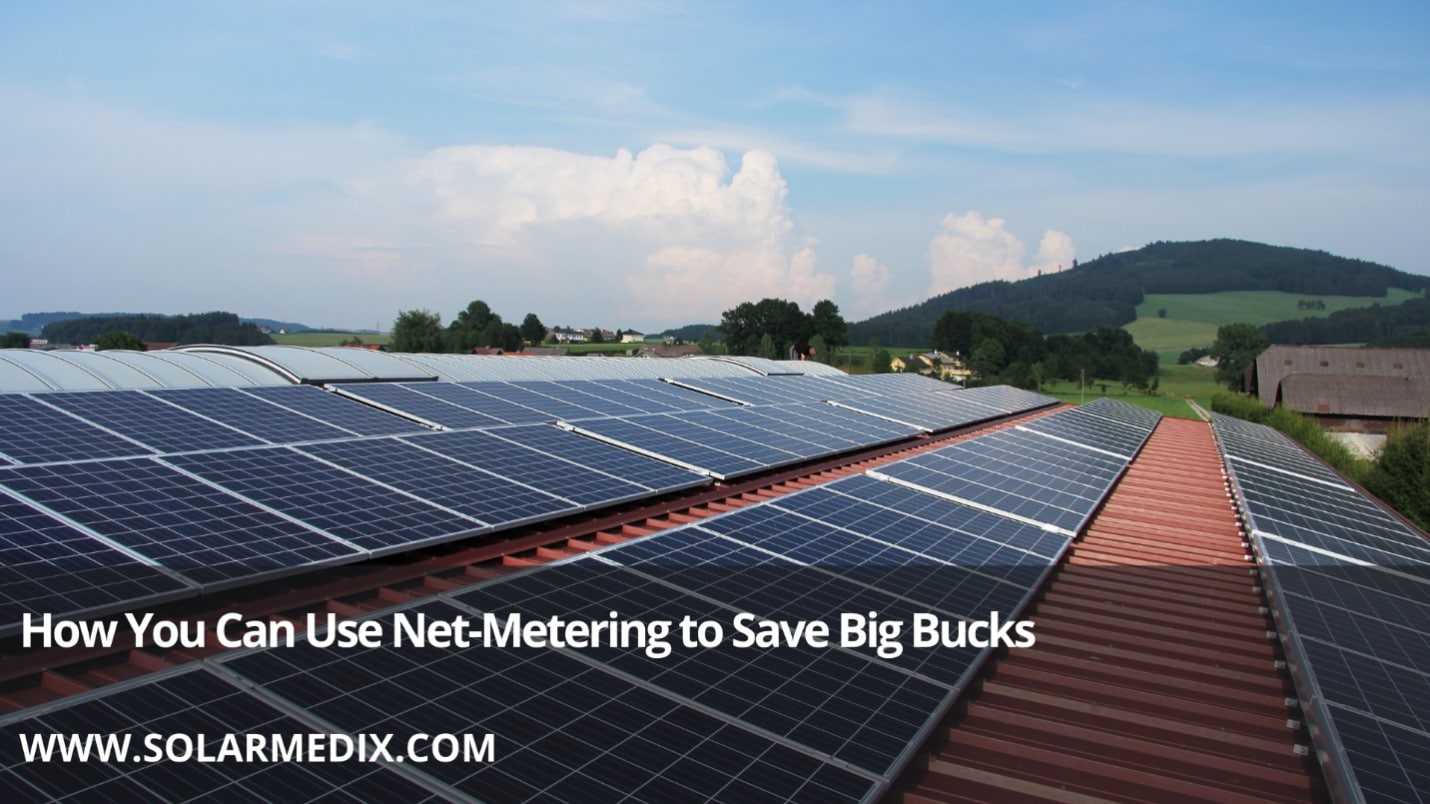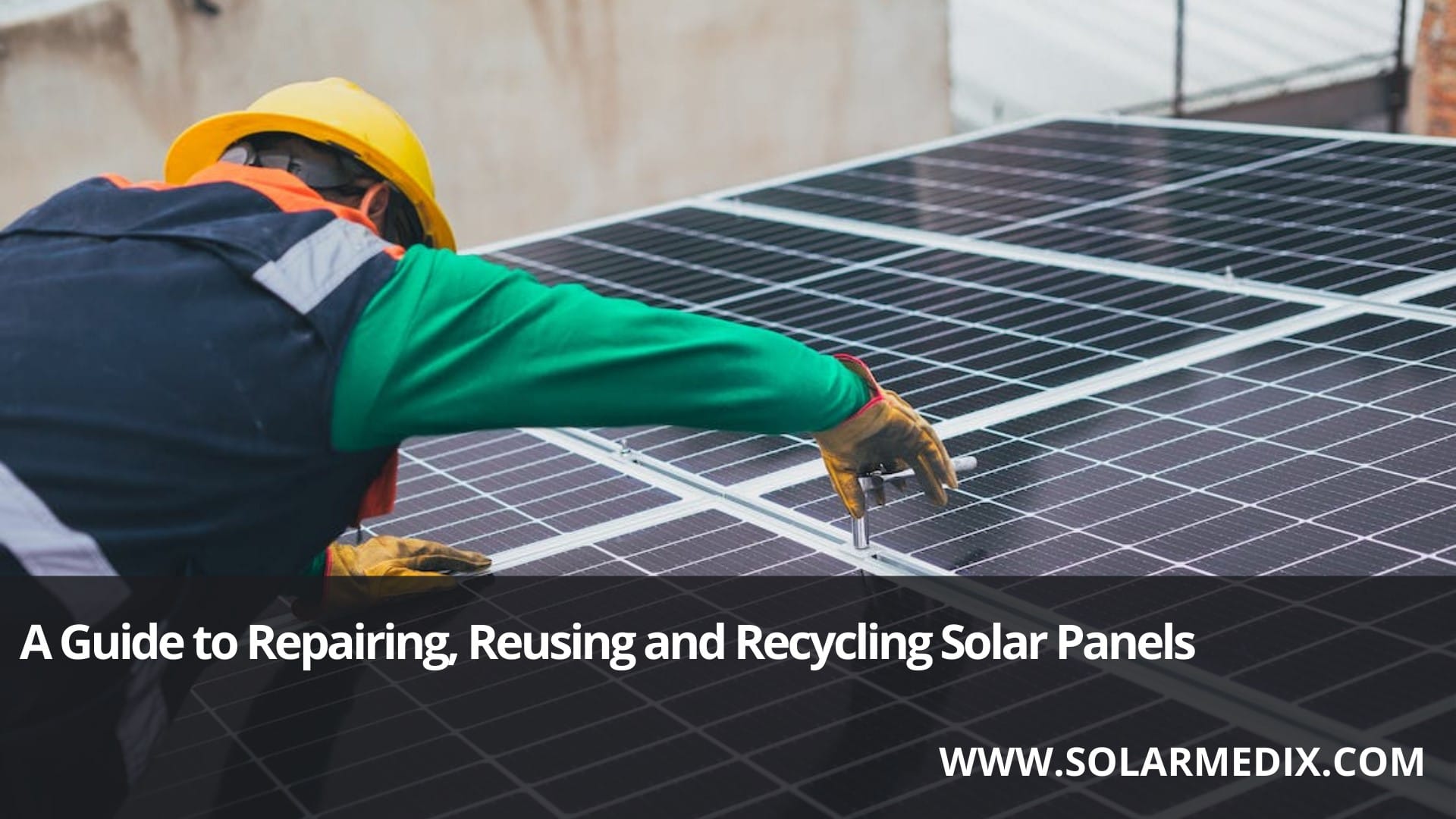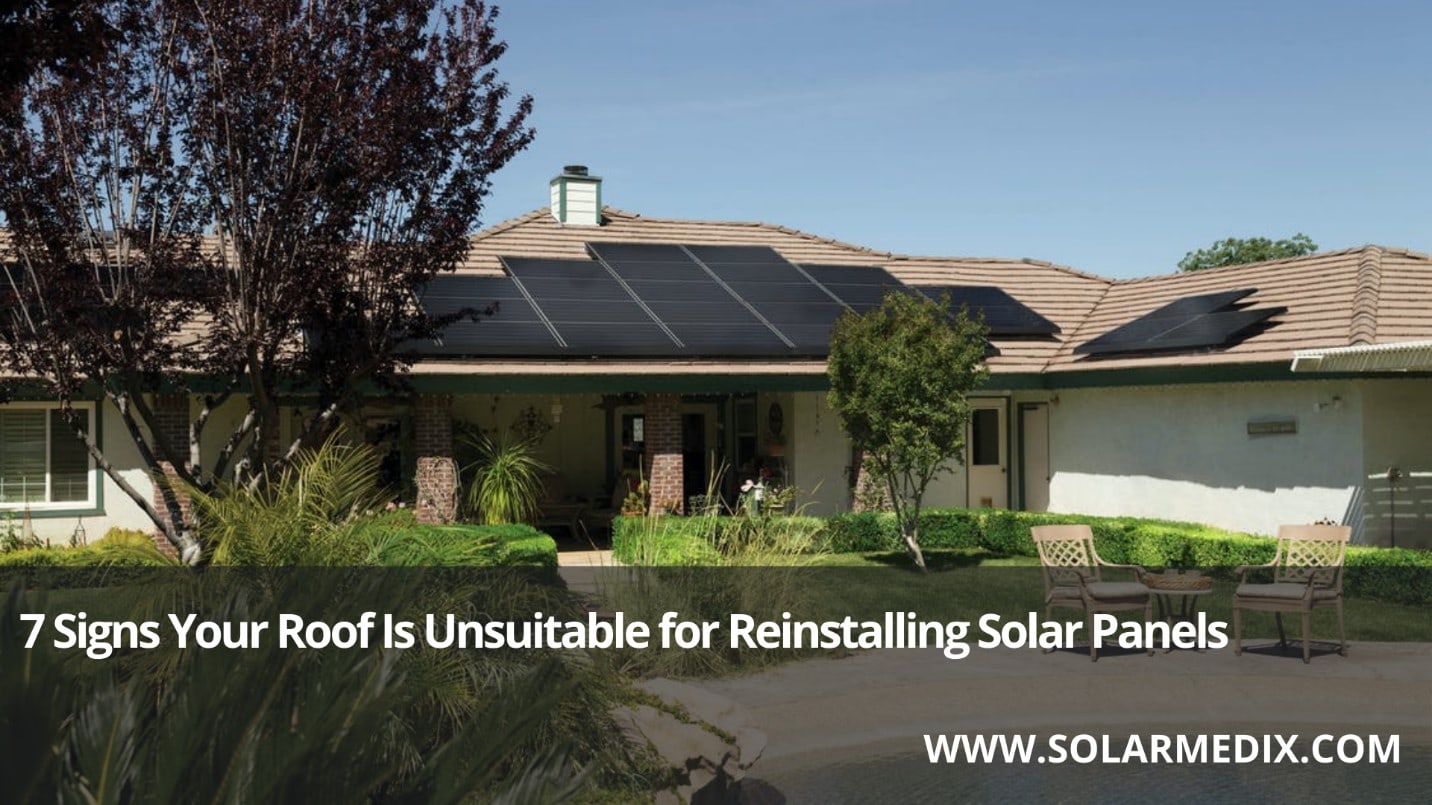Generally, solar panels are built to last 25 to 30 years. However, you may find the need to take down and reinstall your system much earlier for reasons such as conducting roof maintenance and repairs or relocating the system to your new house. This article will explain how long removing and reinstalling solar panels can take as well as how much it could cost you.
How Long Does Removing and Reinstalling Solar Panels Take?
For your typical residential solar systems, removing and reinstalling solar panels can be completed in a period of 3 to 4 days on average with one to two days required to disassemble the system and roughly the same for reinstalling it.
However, if you had your system disassembled for conducting roof repairs, relocating the system, or having the system itself repaired, as is the case in most situations, you’ll also need to factor in the time required to address your need.
Suffice to say, the length of time it takes to remove and reinstall a system varies from system to system.
There are also various preliminary and concluding industry-standard protocols that must be satisfied before the removal and after the reinstallation, such as performing a site evaluation and final inspection. Adding up the time that would be consumed executing all these steps, the entire removal and reinstallation process can span over about two weeks, give or take.
That is why, estimating how long it will take to remove and reinstall your solar panels without first assessing your system, location, and requirements can only provide you with a poor estimate, one that could be pretty far off from the actual value. Visiting a reputable solar company, on the other hand, can give you a much more accurate and realistic value.
How Much Does Removing and Reinstalling Solar Panels Cost?
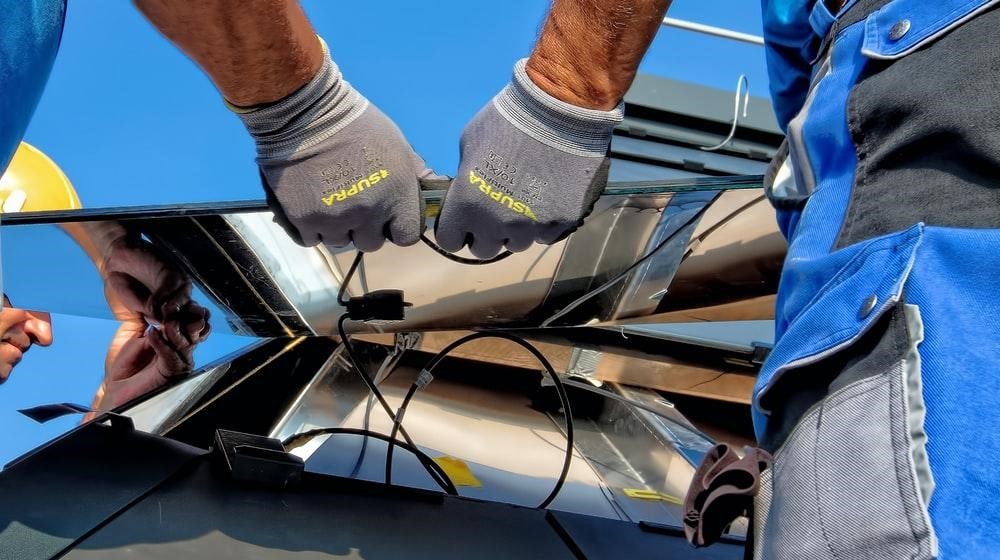
The cost of removing and reinstalling solar panels is generally determined by numerous factors. On average, solar companies usually charge anywhere from $225 to $300 per panel to detach and replace solar panels. While the cost of removing and reinstalling solar panels varies per solar provider, each should be able to provide a base pricing for the job.
The table below shows a rough breakdown of the removal and reinstallation cost of a single solar panel as well as ten solar panels.
Item Cost Per Panel | Cost Per Panel | Total Cost (10 Panels) |
| Uninstallation and Disconnecting Solar Panels | $50 – $75 | $500 – $750 |
| Removal of Mounting Hardware | $25 | $250 |
| New Mounting Hardware | $50 | $500 |
| Reinstallation and Reconnecting | $50 – $75 | $500 – $750 |
| Permits and Inspections | $50 | $500 |
| Total Costs | $255 – $275 | $2,250 – $2,750 |
It is important to remember that all the values quoted in the table above are rough averages and will vary from state to state and from one solar company to another.
Speaking on a general scale, removing and reinstalling solar panels for a typical residential system can cost anywhere from $1,500 and $6,000 according to EnergySage. This, however, does not include any roof or solar panel repair costs or transportation costs in case you’re relocating the system.
As mentioned above, the actual cost that you’ll incur for having your solar panels removed and reinstalled depends on various factors. Explained below are some of the main deciding factors that influence the cost of solar panel removal and reinstallation:
The Condition of Your Roof
An old, battered, and damaged roof will not burden you with repair costs, but such a roof will also be difficult for the solar experts to work on and therefore, may also subject you to higher labor costs. However, some solar companies may be willing to forgo this additional capital gain as a tradeoff for greater customer satisfaction.
Nevertheless, if the solar experts find that your roof requires essential repairs or upgrades before the solar panels can be reinstalled, this will naturally drive up the net cost of the process and so you should be prepared to stretch your budget a bit.
Conversely, if you’re modifying the shape of your roof or replacing your current roofing materials in exchange for more energy-efficient options, be prepared to spend extra.
The Condition of Your Solar Panels
Natural wear and tear, rough weather conditions, partial shading, and bird and rodent vandalization are some typical menaces that tend to damage roof-mounted residential solar panels. When it comes to solar panels, even the smallest bit of damage can degrade the performance of your solar system substantially leading to a delayed payback period and a poorer ROI.
Not only that, but this will also result in greater reliance on grid-based energy and hence higher electric bills. Having said that, if the solar workers find that your solar panels are damaged and cannot deliver peak or near-peak performance, as they should, you’ll have no choice but to look towards getting the panel(s) repaired or replaced.
Of course, this will necessitate allocating more funds to the project’s budget to cover the expense of replacing or repairing the solar equipment. You could choose to keep working with your damaged solar panels, but in all honesty, this would be an unwise decision and we would not recommend doing so unless your budget doesn’t allow you to afford the repairs or replacements.
Whether or Not Storage of Solar Panels Is Required
As discussed previously, there are numerous reasons why you would want to or find the need for removing and reinstalling your solar panels. It is worth knowing, however, that some of these reasons may require you to have your solar panels transported and stored at an off-site location, for instance when relocating your solar panels or having your roof repaired.
You will of course be required to pay extra for the transportation and storage of your solar panels. This expense, however, is subjective to the solar owner’s needs and can be avoided if the owner comes through with their own means for storing and shipping their panels.
The Condition of Your Solar Hardware
In addition to solar panels, bad weather, pesky birds and rodents, and natural wear and tear can also damage your mounting equipment and other solar hardware. Sticking to damaged hardware can potentially lead to damaged solar panels soon after the reinstallation.
This is so because loose fittings and connections will likely fail to provide the structural support your solar panels need to stand harsh weather conditions or other external elements.
The cost for replacing or repairing damaged solar hardware depends on what the damage is as well as what hardware has suffered the damage. For instance, damaged solar mounting will likely bill you less than a damaged solar inverter or battery.
Your Location
If your system is situated in a remote location or on the outskirts of a metropolitan, or if your home has an unusual roof design, the removal and reinstallation of your system may warrant special equipment for ensuring a safe solar panel detachment and reinstallation without jeopardizing the safety of the professionals and your equipment.
Moreover, if your home is located in the close vicinity of power lines, the solar experts may need to employ a one-off strategy for removing and reinstalling solar panels. In other words, any deviation from the conventional geographic parameters could raise the cost of removing and reinstalling solar panels.
The Weather
It goes without saying that removing and reinstalling solar panels is safer, easier, and less time-consuming when the weather is clear. However, a severely damaged roof can necessitate an urgent removal of your solar panels considering that the safety of the property’s occupants and the property itself is at stake.
If this urgent removal of solar panels were to coincide with bad weather and the condition of your roof won’t allow you to wait for the weather to become more favorable, the cost for the process may rise owing to the added risk and responsibility the solar company has to bear.
Removing and Reinstalling Solar Panels – Can You Do It on Your Own?
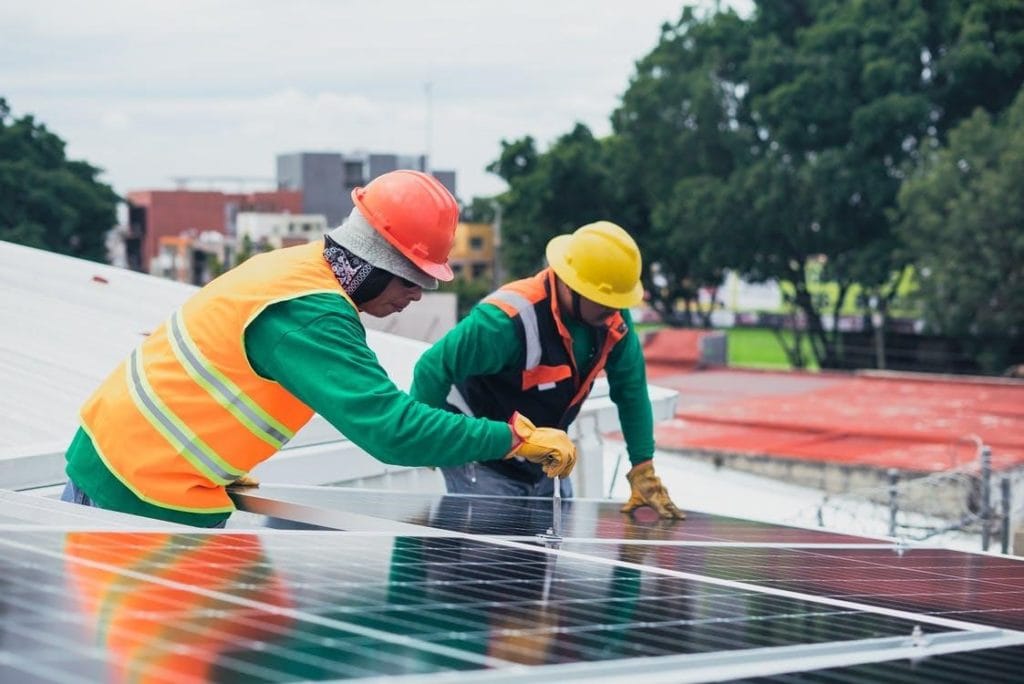
Watching solar panel removal and reinstallation videos and reading step-by-step guides on the same, can hype you up to go for a DIY job, however, it is important for you to know and understand the complexities and risks of the process before going through with it.
Removing and reinstalling solar panels is a lengthy task, one that necessitates the use of specialized equipment, which can be costly to procure for the average homeowner. In addition, DIY-ing your solar panel projects can also void your warranties and contracts.
A solar system is a complicated and elaborate power generating system having electrical connections that can only be properly made sense of by solar experts and therefore should be handled by them. Moreover, improper handling or detachment of the solar panels can damage the intricate and sensitive internal components of the panel, in doing so, compromising the performance of your system.
Keeping in mind that a solar panel system is a sizeable investment, it only makes sense to entrust your solar panels and this solar panel removal and reinstallation service to experts that have performed it many times before.
Furthermore, removing and reinstalling solar panels necessitates a lengthy permitting process that is best handled by a professional solar company. Securing the permits is mandatory since your solar panel system might be connected to the grid. And so, the authorities require assurance that the removal and reinstallation of your solar panels is being handled by qualified professionals. As a result, hiring a professional solar company can ensure effective solar panel removal and reinstallation.
Removing and Reinstalling Solar Panels – How Do the Professionals Do It?
System and Site Evaluation
The first step of the process is a thorough inspection of your system and the installation site, conducted by solar experts from the solar company you hired for the job. The detailed evaluation will allow the expert to understand your needs and help them draw up an estimated timeline and cost for the process.
The estimated timeline can help you plan and execute any required repair work in a way that doesn’t overlap with the solar panel removal or reinstallation. Depending on which solar company you choose, your company might even offer you to handle any roofing work you might require as well, freeing you from yet another hassle.
At the very end of this step comes the paperwork where you sign a contract with the solar company and get your project underway.
Removing the Solar Panels
In the following stage, the solar company will disassemble the solar panels along with the mounting hardware from your roof. Your solar panels and equipment will be inspected to check if it requires any replacements or repairs. Professional roofers will also check the condition of your roof in this stage to determine if it needs repairing.
If your roof is under repair, your solar panels will have to be stored in a safe and secure location until your roof is ready for the reinstallation of your solar panels.
Transporting the Solar Panels
In the case that you’re moving to a new home and wish to bring your solar panel system with you, this will require transporting the solar panels to your new residence.
This job may take longer since the system must be transported and reinstalled from the ground up at a new location. It’s also worth knowing that the reinstallation in such a case might require you to purchase new solar hardware in order to properly install and position your solar panels on the new roof.
Addressing the Roof and Solar Repairs
This stage entails addressing all the required roof and solar panel issues that were discovered during the previous stages. The length of this process is determined by the quantity and scope of repairs required, the weather conditions, and the companies’ readiness to address the issues at hand.
Reinstallation and Review
The reinstallation process will begin after your solar panel system and roof have been repaired and are ready for reinstallation. Once the reinstallation is complete, the system will be evaluated one last time to confirm that everything is working properly. The solar experts will examine your system’s output capacity if it transfers any excess energy to the battery for storage and other factors.
Frequently Asked Question (FAQs)
How Do You Store Solar Panels?
You should store your solar panels in a secure and enclosed location where rodents, birds, or weather elements won’t be able to harm them. A lockable garage would be a perfect location.
Is It Easy to Remove Solar Panels?
Removing and reinstalling solar panels is generally easy given that the person performing the process is skilled and experienced enough.
Can I Install My Solar Panels Myself?
It is not recommended to do so as a DIY installation can void your solar panel and roof warranty. There is also a greater likelihood of damaging the solar equipment when it is being handled by inexperienced personnel.
Can Leased Solar Panels Be Removed and Reinstalled?
Removing and reinstalling leased solar panels is possible, however, you’ll need to acquire the permission of the company that’s leasing you the system.
Conclusion
Removing and reinstalling solar panels is a complicated task and is, therefore, better left to the professionals. Entrusting the process to an unqualified person or doing it yourself can damage your solar equipment and roof. Furthermore, it can also nullify your solar panel and roof warranties. Knowing this, it would be wise that you hire a professional solar company for the job; one that has years of field experience and customer testimonials to prove their competence.
The team at Solar Medix is ready to answer your questions and give you a no-obligation price quote. Feel free to call us at 732-785-4814 or book a consultation online. And we’ll get in touch within 24 hours.
